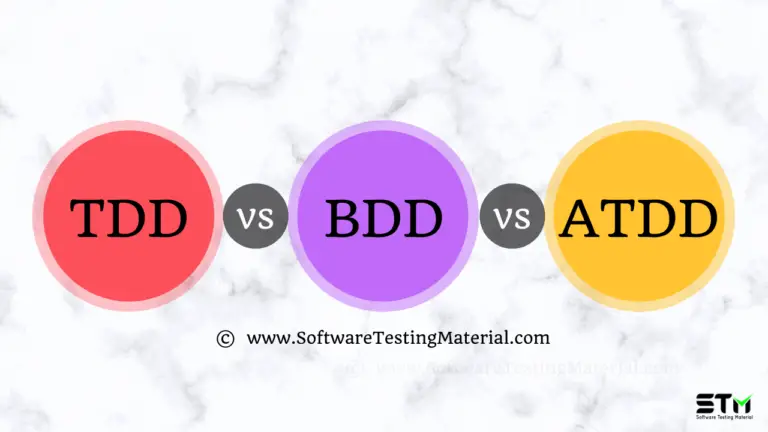Digital Transformation: Big Data Testing for QA Leaders

Even with fantastic software developers, they can still make mistakes during the software development process. While some software only has minimal errors, some are very costly when an erroneous software was released in the market. Software testing is essential to detect any mistake during the development stage of the software and solve any program defect before deploying it. To prevent mistakes during software implementation, one effective way to detect any error is through data testing.
What is Big Data Testing?
Quality assurance using data testing plays an essential role in delivering quality software that meets the demands. It also helps to lessen the development costs as well as resolving the defects before they become an issue. Data testing is also essential in maintaining quality standards. If data testing is done correctly, it ensures that your software is 100% ready for the market.
Below, we have listed some reasons why data testing is essential to software development.
Lessening the cost
Data testing is beneficial in lessening the costs of software development since it helps reduce the time needed for retesting and re-coding. Moreover, it ensures that the end consumer is getting the best result from the software being developed and satisfying the product. It also ensures that the end product meets the industry standard.
An application that is free from bugs and errors
Using data testing for quality assurance is also one of the best options for developers to ensure that the end product is free from any possible errors and bugs before selling it in the market. This also makes your customer feel valued since you are ensuring them that they are using a high-quality application or software. Moreover, high-quality software applications that are free from defects can attract lots of potential clients since it increases your credibility and reputation in the market.
Enhanced user experience
Due to high competition in the market, your development team must produce software that will ultimately allow users to make their lives easier. Through data testing, QAs will be able to assess every aspect of the software straight from the end-user perspective. Furthermore, by removing all kinds of bugs and performance issues, it provides an enhanced user experience significantly, which in turn attracts engagement and makes a profit in the long run.
Prevention of malware attacks
Websites and mobile apps have many instances to stop their operation due to malware attacks. With this, it can affect the reputation of the business since people will question their data security. Continuous data testing makes software developers to effectively identify weak pieces of code and remove or replace them with a better one to maintain the integrity of the software and the security of all the data it handles.
Makes the software development more efficient
Data testing is also perfect for agile development methodologies to cut cost and time for the development process. Agile methods are helpful for both QAs and developers for monitoring the whole software development life cycle.
Generate sales
As we have mentioned earlier, producing an application free from any defect can attract clients significantly. Not to mention also the functionality, features, and enhanced user experience that will satisfy their needs. This also makes you be on top of the competition since it will be straightforward to market the end product and gather positive reviews.
Build a community of satisfied customers
It will keep both your new and existing customers satisfied and happy by offering premium quality applications and software that are free from bugs and errors. Customer retention would become easier, and they will likely promote your product for free via word of mouth.
Data testing helps the QA team and developers improve the credibility of your applications, which in turn enhances the user engagement. Furthermore, aside from attracting customers, it also attracts more investors, thus further increases your market share.
Traditional Database Testing vs. Big Data Testing (Agile)
Because the world’s technology is rapidly advancing, adapting to the newest and modern trends of quality assurance is one of the best ways to keep up. While traditional software testing is still effective today, most software development companies are giving way to new and agile methods since it’s faster, cost-effective, and more efficient.
Both the traditional and agile testing’s primary goal is to test the credibility, reliability, quality, functionality, and other important aspects of the software. However, it is important to know their differences when it comes to the Software Testing Life Cycle (STLC).
Traditional testing
When we say traditional testing, it doesn’t mean it’s obsolete. Many software development companies still use this methodology since it allows the QAs to detect the maximum number of defects during the development process. It ensures the quality and effectiveness of the end product. However, traditional testing requires a tremendous amount of effort as well as time. Also, not to mention that implementing any changes into the software is quite difficult, thus affecting the timely delivery of the end product.
Agile Testing
On the other hand, Agile methodology allows different teams to work together in finding possible bugs and program defects in the development process. Moreover, to achieve better results, the company can use a web based test case management tool in the agile environment, which can help lessen the time for product delivery and ensure the optimum quality of the end product.
Both the traditional testing and agile testing methodologies are effective and efficient. Both of them offer many advantages to the QAs as well as to the developers. Though agile testing might seem more beneficial than the traditional testing, implementation solely depends on the client’s need. So, whether a software development company chooses agile testing over traditional testing will surely help them get results.
What is the need for testing big data?
When it comes to Big Data projects, there are various types of testing in several areas like Performance Testing, Functional testing, Infrastructure, and Database testing. Big Data Testing includes a vast amount of data, either structured or unstructured. The best example when we talk about Big Data is data from eCommerce sites like Amazon, which currently both have millions of visitors as well as product listings. Below are some reasons why software developing companies need testing big data.
Data Ingestion Testing
Usually, Big Data is collected from multiple data sources like CSV, transaction logs, social media, etc. and all of them are properly stored in HDFS. During the test, the primary goal is to verify that the data extracted was correctly loaded. QAs have to ensure that the data obtained are ingested adequately according to the required schema and must also check that there is no data corruption. The QAs validates the accuracy of data collected by getting a portion from original data, and after the ingestion process, it will compare the original data from the ingested data.
Data Processing Testing
In this testing procedure, the focus is on the aggregated data. It validates whether the logic is appropriately implemented or not by comparing the output data with input data.
Data Storage Testing
When the processing is finished, the data output will be stored in HDFS. The QAs soon have to verify the output data if it is properly loaded into the storage medium (data warehouse) by comparing the original data with the HDFS data.
Data Migration Testing
Data Migration is only needed when a vast amount of data needs to be moved from a different location (server) or if there is a significant technology update. It is also an essential process of transferring the entire data from old application software to the new one. Data Migration testing, on the other hand, is achieving minimal downtime at the same time limiting data loss during the migration process.
Phases of Data Migration Test
- Pre-Migration Testing
- Migration Testing
- Post_Migration Testing
Performance Testing Overview
Big Data Applications usually include the processing of vital data coming from vast computing resources. With this, data structure plays a fundamental role. Any structure issue found might cause performance difficulties along the way. So it is important to conduct a Performance Testing to totally avoid difficulties. Following are some points on which Performance Testing majorly focused –
Types of Performance Testing
- Data loading and Throughput
- Data Processing Speed
- Sub-System Performance
Integration Testing
Integration Testing tests front end application depending on the user requirements. It will try to verify the results that come from real-time front end applications by matching them with the expected results. This methodology will test the work being done from the Data Ingestion process to Data Visualization.
Challenges faced in testing big data
Automation
While big data testing tools feature automation, you still need someone with the necessary technical expertise since the system is not yet capable of handling unexpected problems during the testing phase.
Virtualization
While virtualization offers an excellent alternative to real-time testing, it still comes with some challenges. When there are too many virtual images being created, it significantly affects performance. On the other hand, the virtualization process offers scalability and enables you to create a sandbox environment.
Tools used in testing big data
Microsoft HDInsight: It is a Big Data solution provided by Microsoft. This tool is powered by Apache Hadoop that effectively stores a large amount of information or data in a cluster.
NoSQL: NoSQL databases can store unstructured data. It stores information with no particular schema.
Apache Sqoop(TM): This tool can efficiently transfer large amounts of data between structured datastores and Apache Hadoop.
PolyBase: It is capable of accessing data outside of the database by using the t-SQL language.
Presto: This tool is an open-source distributed SQL query engine. It can run interactive analytic queries from data sources of all sizes ranging from gigabytes to petabytes.
Conclusion
Data testing is essential to the software development life cycle. It helps QAs and developers speed up the development process while reducing or removing defects along the way to producing premium quality applications and software before offering it in the market.
Related Posts:
- Database Testing Interview Questions
- Integration Testing
- Independent Testing
- Regression Testing
- Unit Testing
- Functional Testing
- Load Testing
- Performance Testing






